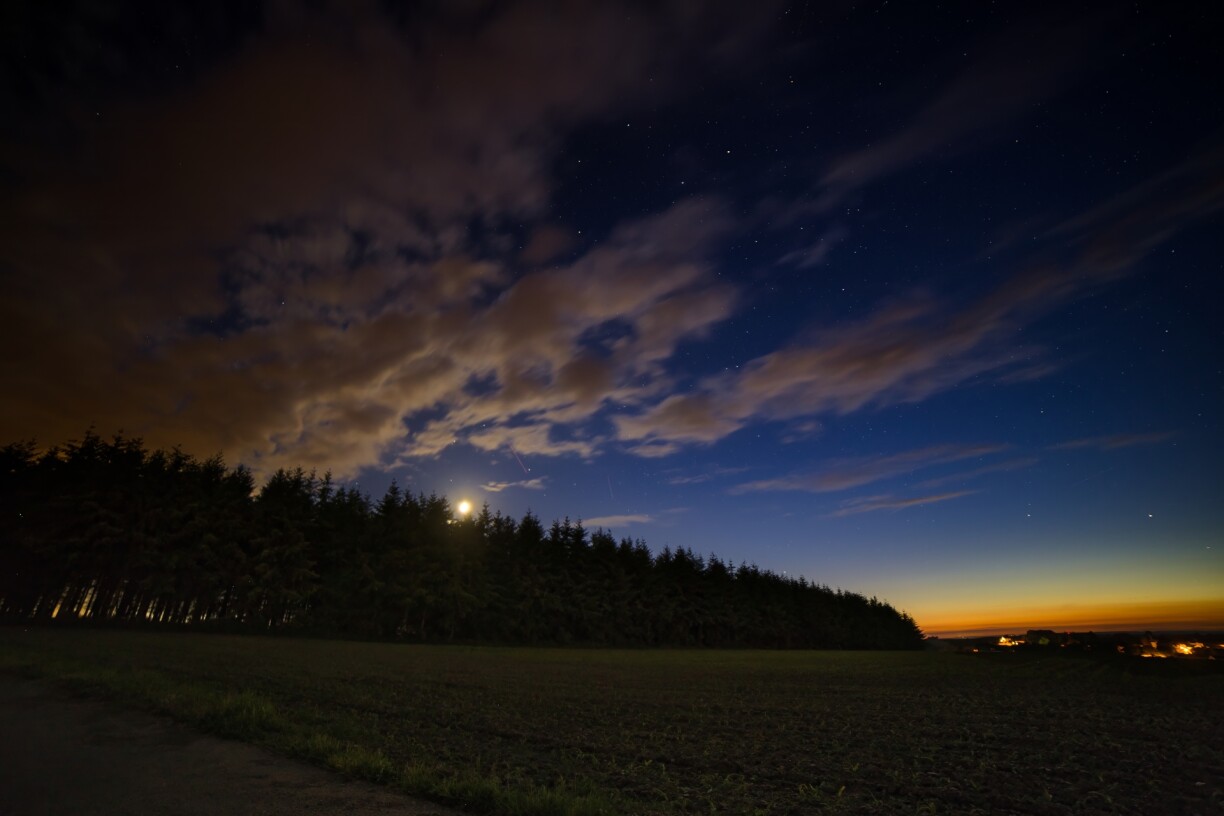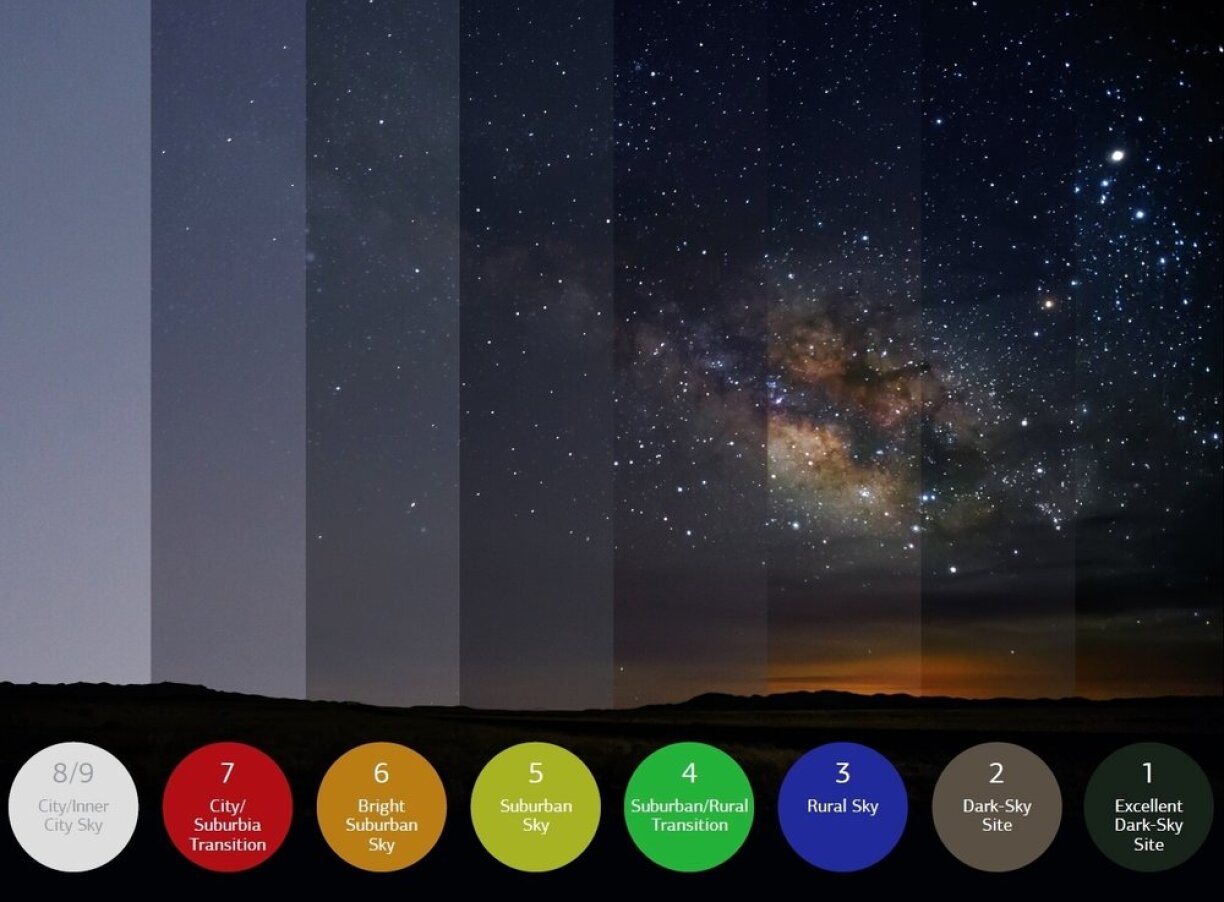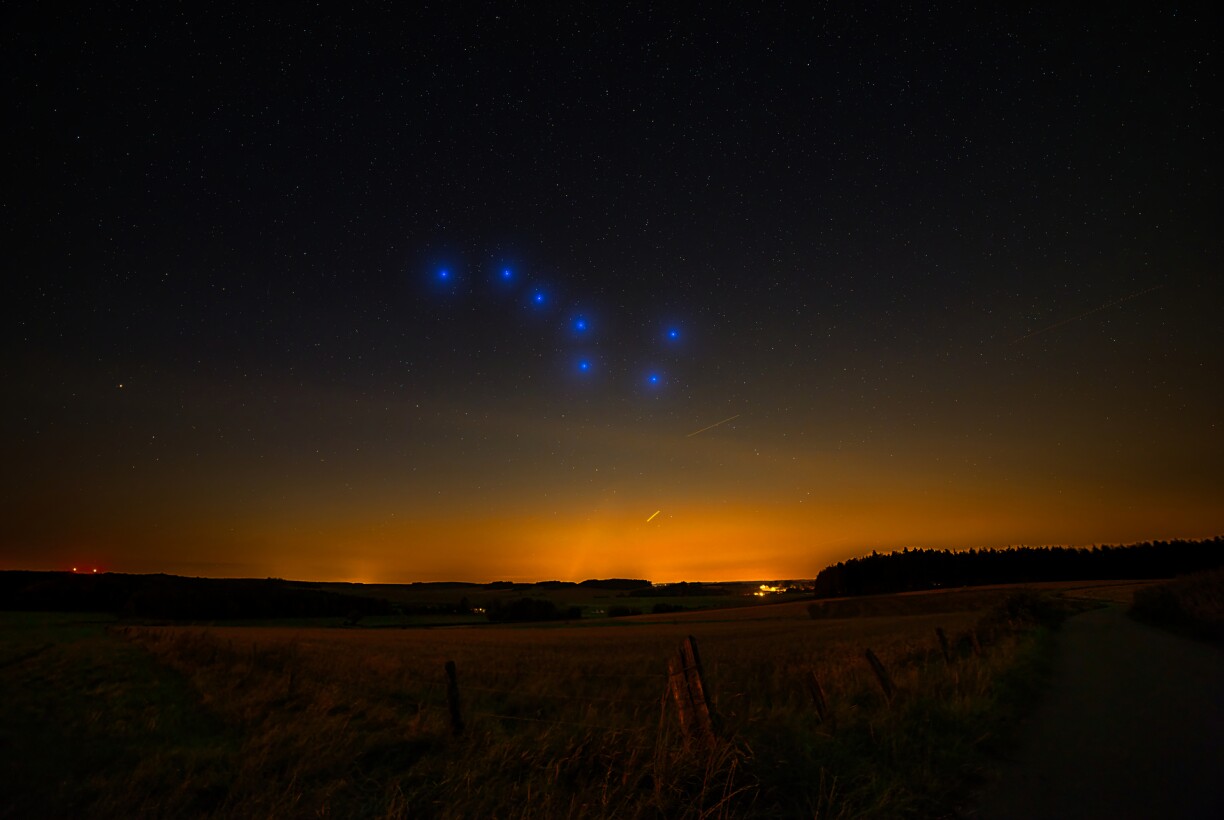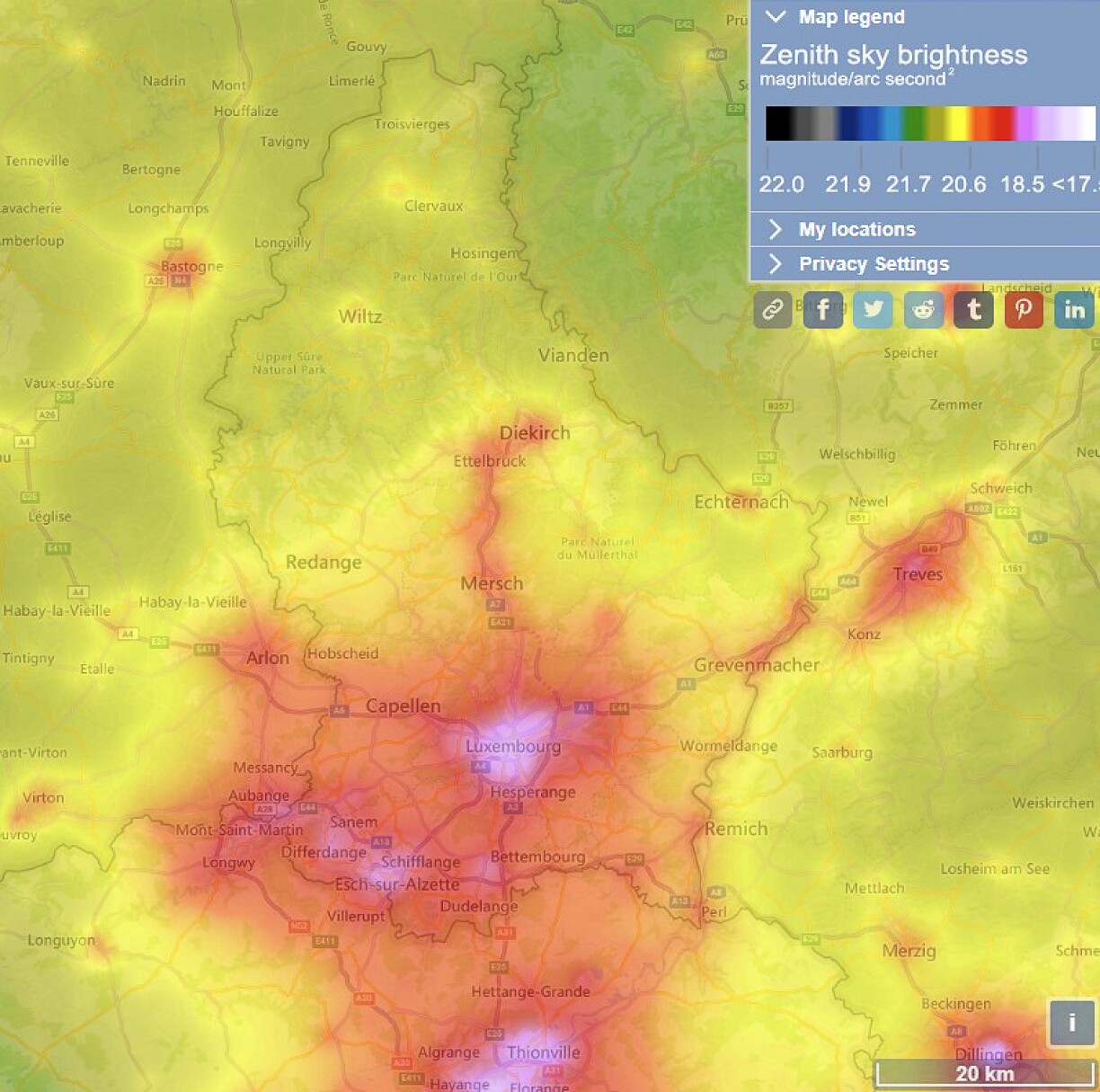
In this article, we highlight Luxembourg’s top stargazing spots, perfect for escaping the glare of city lights and reconnecting with the stars.
Light pollution, the excessive and misdirected artificial light at nighthas become one of the most overlooked environmental issues of our time.Over 80% of the world’s population lives under light-polluted skies, according to a comprehensive global light pollution atlas published in Science Advances (2016). This issue is especially severe in Europe, where nearly 99% of the population experiences artificial light at night. The dark skies are rapidly disappearing.
The consequences of light pollution extend far beyond obstructing stargazers’ views of the night sky. Studies published in Chronobiology International (2020) show that exposure to artificial light at night disrupts circadian rhythms, leading to sleep disorders, increased stress, and even heightened risks of chronic conditions such as cardiovascular disease. The American Medical Association has similarly warned about the health implications of light pollution.
The ecological consequences of artificial light extend to wildlife and plants.A 2019 study in Frontiers in Plant Science found that artificial light delays autumn leaf fall by up to 20% and accelerates spring budding. This seasonal disruption poses risks to ecosystems and food chains, highlighting the urgent need for mitigation efforts.

With its densely populated areas, particularly in the south of the country, and growing infrastructure, Luxembourg faces its own share of light pollution. Streetlights, illuminated buildings, and industrial zones create a glow that obscures the stars and disrupts the natural environment. Yet, despite these challenges, Luxembourg still has some incredible stargazing locations to offer.
While many of these are found in the quieter northern regions of the country, some are just a short drive from the city centre, providing convenient escapes from urban light.
Naturpark Our:Nestled in the northeastern region of the country, Naturpark Our is a prime destination for stargazers. The park encompasses areas around Clervaux, Weiswampach, and Wiltz, known for their limited artificial lighting and expansive views, offering darker skies and tranquil surroundings. The park’s hilltops and open valleys provide excellent vantage points for seeing the stars.

Parc Naturel du Mullerthal: Known as Luxembourg’s “Little Switzerland”, the Mullerthal region is renowned for its dramatic rock formations, lush forests and hiking trails, but it also boasts relatively dark skies in specific spots. The areas around Berdorf and Echternach are particularly popular, being easily accessible from the capital. For more secluded views, explore hiking trails near Consdorf or the Mullerthal village itself, where natural surroundings create a serene setting for stargazing.
Upper Sûre Natural Park: This park, found in the northwest, offers another excellent possibility for stargazing. At its heart lies the Upper Sûre Lake, a popular focal point for visitors and a stunning backdrop for night-sky observation. Areas near Esch-sur-Sûre and Lultzhausen offer the best conditions, as the park’s open landscapes and remote villages minimise light pollution. For an unforgettable experience, set up near the lake’s shores, where the still waters reflect the stars above. Alternatively, explore the trails leading into the surrounding hills or head to secluded spots like Boulaide or Insenborn, which provide elevated and unobstructed views.

Areas around Redange/Attert: Located in the western part of Luxembourg, the countryside surrounding Redange is an excellent choice for stargazing within a relatively short distance from the city. This region offers a mix of open fields, quiet rural roads, and small villages. The rolling landscapes and elevated areas around Redange make it particularly appealing for setting up observation equipment or simply enjoying the stars with minimal distractions. Its accessibility and tranquil environment make it ideal for those seeking a peaceful stargazing experience.
Canton of Echternach: Situated in eastern Luxembourg, the Canton of Echternacht combines accessibility with natural beauty. While the town of Echternach itself is a vibrant hub, the surrounding countryside and smaller villages, such as Beaufort, Consdorf, and Rosport, provide darker skies and quieter settings. For the best experience, venture farther into the rural outskirts, where the glow of city lights diminishes.
Free online tools such as Dark Site Finder and the Light Pollution Map allow enthusiasts to identify optimal stargazing locations by highlighting areas with minimal artificial light.

Reducing light pollution is a collective effort, and small changes in how we use artificial light can have a significant impact:
.
.
.
.
By taking these small steps, we can help preserve our night skies for future generations and protect the natural world. With a bit of effort and awareness, Luxembourg’s night skies can shine once again.
Adriano Anfuso is a photographer and digital creator who is passionate about capturing the awe-inspiring beauty of the cosmos and Earth’s wonders. You can check out his work here.